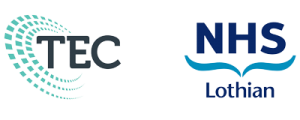Terms, Abbreviations,
Jargon and Clinical Speak

You can read more about some of these terms in other areas of the package.
Click on the title to see more information
AFT – Adolescent Focused Therapy: An individual psychotherapy with a focus of self efficacy, autonomy. Parents will have meetings with the therapist separately from the young person.
AMHS – Adult Mental Health Services
Binge eating – To eat a large amount of food in one sitting.
BMI– Body Mass Index: BMI is a value that comes from the weight and height of a person. It is an attempt to measure how much mass (fat, muscle, bone) is in a person which then determines if they are underweight, overweight, obese or normal weight based on the number. It is not widely used in young people under 18.
YPU/IPU – Young people’s unit or inpatient unit.
CAMHS – Child and Adolescent Mental Health Services
CBT – Cognitive Behavioural Therapy: Structured treatment with a set amount of sessions focusing on the way a person processes thoughts and feelings. It aims to support a person to deal with overwhelming feelings and problems by breaking them down into small parts and helps stop a person getting stuck in a “negative thinking” cycle.
CBT-ED/CBT-E – Eating Disorder Focused Cognitive Behavioural Therapy or Cognitive Behavioural Therapy eating disorder: Structured treatment specially for eating disorders with a set amount of sessions focusing on the way a person processes thoughts and feelings with the focus on eating disorder behaviours. It aims to support a person to deal with overwhelming feelings and problems by breaking them down into small parts and helps stop a person getting stuck in a “negative thinking” cycle.
DSM- Diagnostic and Statistical Manual of Mental Disorders
EDNOS – Eating Disorder Not Otherwise Specified
FBT – Family Based Treatment: a structured treatment approach involving the whole family. It is one of the recommended treatments for anorexia and bulimia. This is the recommended first choice of treatment for children and adolescents.
ICD– International Classification of Diseases.
IPT – Interpersonal Therapy: This approach focuses on a person’s relationships with other people and the impact this has on their eating pattern.
MANTRA – Maudsley Anorexia Nervosa Treatment for Adults: a treatment for adults with anorexia. The treatment involves a person working through a workbook with a practitioner with a focus on motivation, separating anorexia from identity and involving family members/carers to understand the eating disorder and support the person to change the eating disorder behaviour. This is a recommended treatment for adults with anorexia.
MARSIPAN – Management of Really Sick Patients with Anorexia Nervosa. A resource for clinicians caring for the medical aspects of a person experiencing an eating disorder.
Maudsley – “Maudsley” may refer to the Maudlsey Hospital in South London. The hospital is the largest mental health training institute in the UK. Many eating disorder specialists are attached to the hospital.
The “Maudsley Approach” is Family Based Treatment.
The “New Maudlsey Approach” – is a collaborative carer approach developed by Janet Treasure and Colleagues.
The Matrix – Is a guide aimed at psychologists in Scotland that supports them to deliver evidence based psychological therapies.
MHA – Mental Health Act
OSFED – Other Specified Feeding and Eating Disorder
Purging – this is something that is often done after a binge. A person can “purge” themselves through: self-induced vomiting, misuse of laxatives, diuretics, or enemas.
Recovery – a clinician may talk about your loved one being in recovery –they are aiming for the young person to maintain a normal weight range with minimal eating disorder thoughts and behaviours . Recovery to you and your loved one may mean more than just this.
SSCM – Specialist Supportive Clinical Management: a treatment for adults to assess identify and review key issues and problems. This is a recommended treatment for adults with eating disorders.
W4h – Weight for Height; this is a measure used by clinicians in child and adolescent mental health services. It works out more accurately what a person’s expected weight/weight range should be. This is a measure only used in young people under the age of 18.
